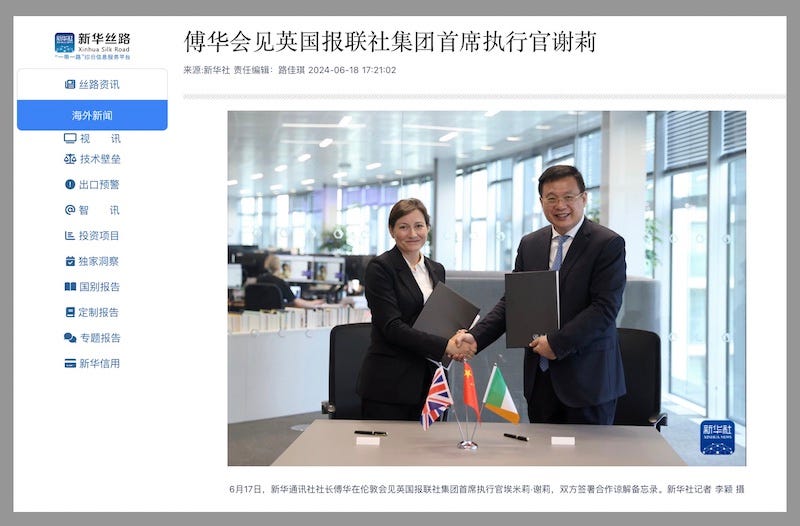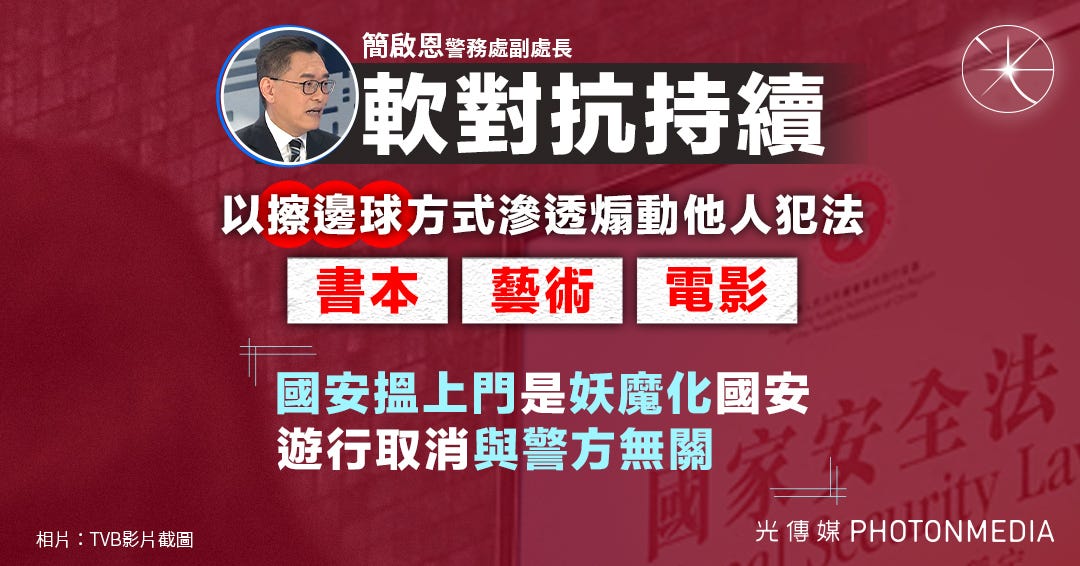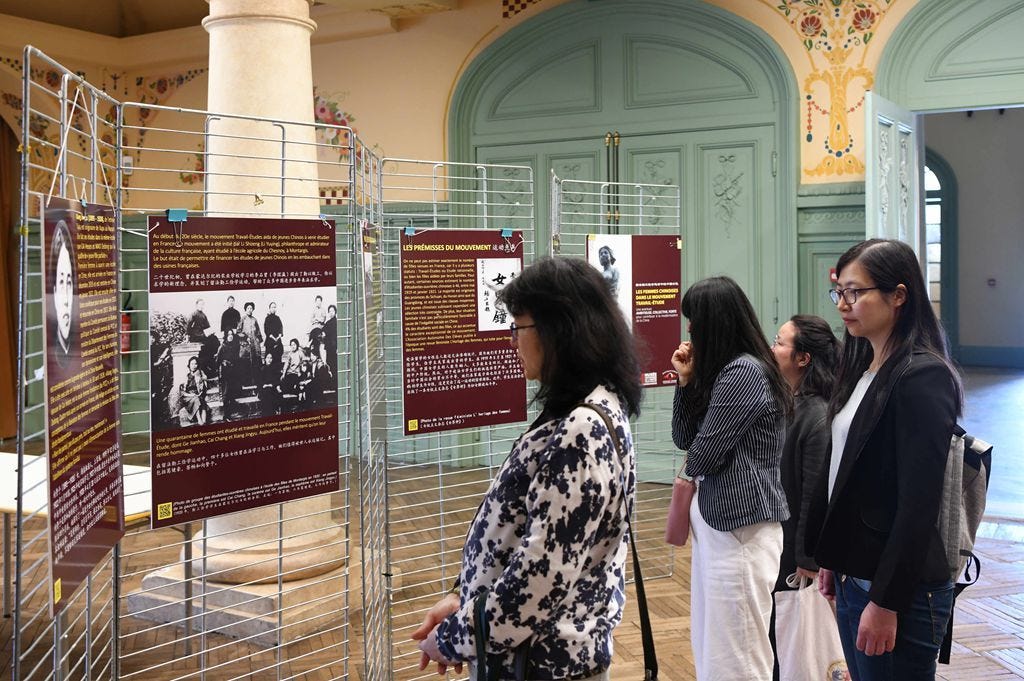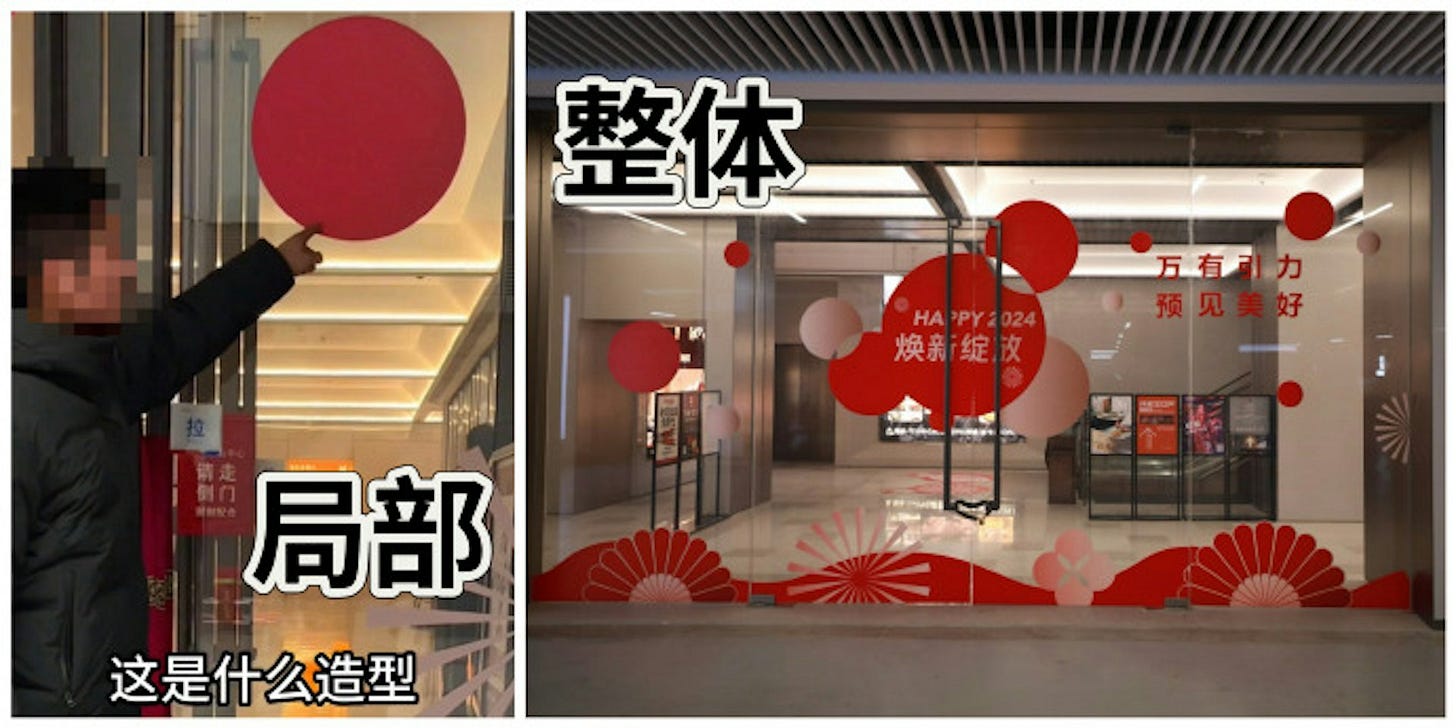Lingua Sinica Newsletter, 11 July
News, analysis, and commentary on Chinese-language media from the PRC and beyond.
Welcome back to Lingua Sinica.
Just a few weeks ago, we were on the streets around Taiwan’s Legislative Yuan to take in the huge protests that became known as the “Bluebird Movement,” aimed at stopping efforts by the opposition-controlled legislature to grant themselves wide-ranging new powers that could hobble the government. Now, we’re suddenly at the center of the story itself.
The Bluebird protests, ultimately, did not succeed, and opposition lawmakers are using their new powers to target Taiwan’s media regulator and remake the local news landscape — something we cover more in In the News below. It’s a bit of a shock to the system, but an important reminder of how, even in the liberal bastion of Taiwan, the work of establishing and defending a free press is never done.
In these jittery times for the media in Taiwan, we’re pleased to announce that CMP is readying the launch of a Chinese-language publication to complement our Lingua Sinica work. It will offer not only groundbreaking journalism on stories related to the media, but also offer a platform where journalists and other industry insiders working in the Chinese-language media across the world — including in Taiwan — can share best practices and work together in the face of common challenges.
All of this work can benefit from your continued support. Last week, we also launched our first China Chatbot news bulletin, covering what happens when Chinese media meets Chinese AI. The inaugural edition is free for all of our subscribers to read, but future bulletins will be for paid subscribers only — so consider joining the ranks of our “Low-Level Red” and “High-Level Black” members, from as little as US$50 a year.
We’re also offering a limited-time discount of 10% for our free subscribers to go paid within the next 48 hours. Just click here to upgrade to paid and you can look forward to more exclusive content in the future!
Ryan Ho Kilpatrick
CMP Managing Editor
IN THE HEADLINES
A Migraine for Sinograin
In an investigative report last week, a Beijing newspaper exposed lax food safety practices. It was just like old times.
On July 2, the Beijing News kicked up nationwide health concerns in China by reporting that the state-run grain stockpiler Sinograin was using the same tanker trucks to transport both fuel and food oil products, forgoing any cleaning process between. Naturally, Chinese consumers were infuriated at the idea that their soybean oils and syrups might be sloshed together with coal-to-oil (CTL) products, which use coal as a raw material to produce oil and petrochemical products through the chemical processing process.
In a more active press system, Sinograin’s violations might have been revealed long ago. According to the report, the safety violations of the Sinograin oil truck fleet have long been an “open secret” in the industry — and it lays bare the fecklessness and ambiguity of national standards, which are treated as recommendations only, and routinely ignored by oil manufacturers and transporters. But investigative reports of this kind have become a rarity in the Xi Jinping era.
For more on this rare exposé in the Chinese media, and a partial translation, visit the CMP site.
FLASHPOINTS
Hard Talk on Soft Resistance
Hong Kong’s national security enforcer suggests in public remarks that books and art are being used for subtle subversion.
With the annual Hong Kong Book Fair kicking off at mid-month, it was the wrong message and the wrong time. On July 7, Kan Kai-yan (簡啟恩), the director of the National Security Department of the Hong Kong Police Force, appeared on a prominent talk show with a not-so-subtle warning. Soft resistance (軟對抗), he said — using a term that since early last year has come to denote expressions of criticism against the government — continues to "infiltrate" Hong Kong society through means such as the internet, art, books, and films, subconsciously inviting people to break the law.
Appearing on the “On the Record” (講清講楚) talk show on TVB News, Kan said that despite the territory’s National Security Law and recently introduced national security legislation known locally as Article 23, those engaging in soft resistance would continue to “hit lineballs” (打擦邊球) — meaning that they would push the bounds (akin to the English phrase “push the envelope”).
For more on Kan’s remarks and their disturbing implications, we recommend readers try this week’s report at the Hong Kong exile outlet Photon Media. And for more on how Hong Kong’s independent book publishers and bookshops are faring these days, check out our feature on the topic in cooperation with the folks at Photon.
IN THE NEWS
Smoke and Mirrors
In past issues of the Lingua Sinica newsletter, we covered how Taiwan’s opposition Kuomintang (KMT) and its ally the Taiwan People’s Party (TPP) were pushing through a bill to give themselves new investigative powers that could sabotage the administration of new Democratic Progressive Party president Lai Ching-te. The alleged power grab brought hundreds of thousands of “Bluebird” protesters to the streets of Taipei, but the bill ultimately passed thanks to the KMT’s slim legislative majority.
Now they’ve identified the first target of these new powers and, alarmingly for many journalists, it’s the media. Last week, the KMT announced it was beginning an investigation into the country's media regulator, the National Communications Commission (NCC), over its decision to grant a broadcast license to Mirror Media, an outlet seen as friendly to the DPP’s political camp. This investigation has also been coupled with a push by KMT legislators to amend Taiwan’s Satellite Broadcasting Act, restoring broadcast rights to a controversial pro-China network that was fined for spreading disinformation and lost its license in 2019. The amendment would also see broadcast licenses conferred in perpetuity, taking away the NCC’s ability to regularly review renewal applications and access broadcasters’ performance.
That’s raised alarm bells among leading journalists in the information space. The Association of Taiwan Journalists has warned of "extremely bad" consequences if the NCC lost "one of the most important tools to ensure the quality of news stations.” While the formerly authoritarian KMT is framing this as “defending press freedom,” DPP legislator and Doublethink Lab co-founder Puma Shen (沈伯洋) has highlighted the potential dangers of allowing media to broadcast misinformation without consequence.
BACK ISSUE
Catastrophic Failure
Just over a week ago, a space rocket owned by Chinese company Space Pioneer (天兵) accidentally launched itself during a test, plummeting back to Earth less than a minute later. Footage shot by residents of Gongyi (巩义) in Henan province showed the first stage of the Tianlong-3 (天龙三号) launch vehicle climbing into the sky before halting and then falling, erupting into flames on a hillside within sight of nearby villagers. Despite the dramatic scenes, however, Chinese media have reported that there were no casualties.
The incident takes us back to February 1996, when another Chinese rocket failure caused destruction, panic, and speculation that persists to this day. This was the Intelsat 708 telecommunications satellite, whose Long March 3B launch vehicle failed while it was being launched from the Xichang Satellite Launch Center in Sichuan. The launch vehicle veered off course immediately after liftoff and sent the rocket hurtling into a nearby village. Officially, the death toll was pinned at six people — but this came weeks later after a news blackout. This official secrecy, combined with the surprisingly low casualty number, has fueled conspiracy theories over the years that a cover-up of hundreds of deaths might have taken place.
Footage of burned-out buildings, captured and smuggled out by foreign observers, has also added to these theories. Nearly two decades after the incident, Bruce Campbell, an American safety specialist who witnessed the crash, went public with his doubts. In an interview with Smithsonian magazine, Campbell shared his speculation that the official death toll only reflected military personnel who were caught by the blast and not the civilian population. From the article:
What Campbell and his friend did not see were human casualties. At the time they reached the residential area, hundreds of Chinese soldiers and military vehicles were flooding the area, and the Americans suspected that one of their main tasks was to remove bodies. Eyewitnesses in Xichang would later describe many flatbed trucks carrying what appeared to be covered human remains to the military base and hospitals in the town, along with dozens of ambulances.
The Space Pioneer incident on June 30 came just days before China announced revisions to its emergency response law. While the Ministry of Justice said on July 3 that the law would ensure timely and accurate reporting on emergencies, some Chinese journalists expressed concern that it would lead to even tighter restrictions on on-the-scene reporting — exactly the sort of professional journalism that might expose systemic problems like rockets dropping onto hapless villages.
BUZZWORDS
Au Revoir, Laissez-Faire
For generations, Hong Kong’s economy has been run according to a principle that, on the face of it, sounds almost oxymoronic: “positive non-interventionism” (積極不干預). But recent statements in state media by pro-Beijing heavyweights now hint at the concept’s death.
The idea, first coined by the then-British colony’s Financial Secretary John Cowperthwaite in 1971, was a simple one: the less the government does, the better the economy will do. It was never quite about leaving everything to the market, however. It often meant carefully considering interventions rather than ruling them out entirely. Whatever the case, it seemed to work, guiding Hong Kong through its greatest boom years and making it the darling of free market capitalists the world over. It worked so well, in fact, that it almost seemed sacrosanct. Virtually all of Cowperthwaite’s successors, even after the handover to Chinese rule in 1997, announced they would carry forth the spirit of positive interventionism. Former Chief Executive Donald Tsang (曾蔭權) once penned a sentimental paean to the policy, calling the city “a shining example of the free market.”

Compare that to what Professor Lau Siu-kai (劉兆佳) of the Chinese University of Hong Kong wrote in Orange News (橙新聞) on July 1:
Politically, Hong Kong has broken away from its past of political turmoil, ineffective governance, and "small government, big market"... Instead, the Central Government has been actively exercising "comprehensive governance," "patriots ruling Hong Kong," and "executive-led" governance.
“Big Market, Small Government” (大市場, 小政府) was Donald Tsang’s iteration of positive non-interventionism — a thing Lau says is now a thing of the past, replaced with the very big-government reality of a Hong Kong that is struggling to crack down on dissent and satisfy central authorities in Beijing while remaining open for international business. And as we’ve covered before, Lau is more than a cloistered academic — he is also a CPPCC delegate and the vice-president of a semi-official think-tank that helps guide Beijing’s Hong Kong policy. If he says they’re pouring Hong Kong’s secret sauce down the drain, this could be an important sign.
More recently, pro-Beijing heavyweight Regina Ip (葉劉淑儀) also sounded the death knell for positive non-interventionism. In an interview with NPR, the convenor of the Chief Executive’s Executive Council said, “We can't just rely on the old laissez-faire, market-driven philosophy.”
SPOTLIGHT
The Blind Leading the Bland
It’s bad enough being tasked with creating intelligent life from a few lines of computer code — so spare a thought for Chinese AI companies, who have multiple extra hurdles to jump.
Singapore-based Initium Media lays all these out in a feature that digs deep into what companies designing their own Large Language Model have to deal with. It paints a picture of lagging algorithms slowed down by censorship machinery, multiple companies churning out LLM clones by copying the same technology, a brain-drain of the biggest talent to the US, and a lack of profits or confidence from Chinese investors.
But none of that really clouds the industry’s future, as long as the government keeps spurring it on with its messages that an AI roll-out is a major focus of the country’s development. “With all the industry summits talking about embracing AI, people will form the logic that if I don’t do it, it will look like I’m not very active,” one unnamed Chinese AI entrepreneur told Initium.
Read the full feature from Initium here. And for more on the intersection of AI and Chinese media, make sure you’re reading our new China Chatbot news bulletin.
DID YOU KNOW
Painting the Town Rouge
Think “red tourism” (紅色旅遊) and a few places probably come to mind: the site of the first CCP congress in Shanghai, for example, or Mao’s wartime base in the caves of Yan’an. But a medieval French town? Not so much.
Just 110 kilometers south of Paris, however, is an entire commune known to Chinese visitors as France’s “red town” (紅色小城): Montargis. That’s because it was once home to participants in the Work-Study Movement (留法勤工儉學運動) of the 1910s and 1920s, when hundreds of aspiring Chinese revolutionaries decamped to France to work in local factories and learn about labor organizing — premier Zhou Enlai and Deng Xiaoping among them. Montargis is already home to a Deng Xiaoping Square and a Museum of French-Chinese Friendship opened by the Hunan provincial government, but this week it also unveiled a new exhibit on female Work-Study sojourners hosted by the local government, as reported by the People’s Daily and other state media outlets.
“Red tourism” itself is not a new phenomenon. However, the development of red tourist attractions has accelerated under Xi Jinping, who has recommended that Chinese visit these revolutionary sites to develop "historical confidence" in socialism. The People's Daily also recently expressed hopes that the industry can drive economic development and progress toward realizing "common prosperity.”
Here’s a map we put together of established “red tourism” sites across China, showing the provinces where you can find the highest concentration of patriotic attractions:
STORYTELLERS
Miss Hong Kong Crisis
Two months out from the Miss Hong Kong finals in September, six contestants in the beauty pageant have bowed out to avoid signing “strict” contracts with local broadcaster TVB.
The six included favorites to win the competition, which dates all the way back to 1946. TVB acquired Miss HK in 1973, and since then winners have spent their reigns starring in TVB’s own in-house broadcasting — a cunning way for the station to produce their own stars and then lock them into acting contracts.
The story has been closely watched by As One (娛壹), an entertainment news platform started by former Apple Daily (蘋果日報) reporters after the popular newspaper was shut down in 2021 by Hong Kong authorities amid its ongoing national security crackdown. Although Apple Daily was best known internationally for its strident pro-democracy stance, within Hong Kong it initially rose to prominence thanks to its salacious celebrity gossip — political reporters' work, you could say, was subsidized by their colleagues at the entertainment desk.
It’s still not clear exactly how the contestants found TVB’s contract terms unreasonable. But you can keep up with the latest on the “Miss Hong Kong Crisis” (港姐風波) by following As One on Instagram, Facebook, YouTube, or Patreon.
GOING GLOBAL
Mirror, Mirror, on the Wall
Who’s the most influential city of all?
Over the past two years, China’s central government has pressed provinces and cities to join the national push for more effective external propaganda, which it sees as essential to building the country’s international soft power. Last week, it unveiled a new mechanism to measure and track progress on this strategic goal — an annual ranking to measure the relative success of cities in building their image abroad.
The “China Cities International Influence Report 2023” (中国城市国际传播影响力报告), announced on July 1, measures the presence of Chinese cities across traditional media, internet and social media. How often are cities mentioned in mainstream news reports outside China? How often do social media users mention a given city in comments, and how often are these liked or shared? The result is predictable. Beijing and Shanghai top the rankings, with Hangzhou and Shenzhen following in the third and fourth places.
The new ranking system was jointly created by a think-tank affiliated with the official China Daily newspaper, under the State Council, and the journalism and communication departments of both Tsinghua University and the Chinese Academy of Social Sciences (CASS). The involvement of the China Daily in the new ranking process reflects its close involvement in the push from the central government to build up provinces and cities as centers for global-reaching external propaganda.
As the Chinese government’s flagship external media outlet, published through the State Council Information Office — the same office as the CCP’s Central Propaganda Department — China Daily is a critical and well-funded layer of the country’s international communication array. It seems to be serving as a media partner for many newly-created “international communication centers,” or ICCs, particularly at the city level, where there may be less media savvy, and fewer resources, to handle external communication.
Read more at the China Media Project.
OPINION PAGES
The Politics of the Purely Commercial
On the China Media Project website last week, CMP took international news wires to task for their opaque and poorly-reported partnerships with China’s official Xinhua News Agency. Our hard look at their ostensible business deals — “purely commercial in nature,” AP’s CEO said several years back — came on the heels of a whirlwind tour of the US and the UK by Xinhua President Fu Hua (傅华), during which he met with top executives from AP, Reuters, and PA Media Group.

As we point out in the commentary, Fu Hua is not just a news agency executive but a senior Chinese official with a long resume within China’s propaganda apparatus. These deals with Xinhua, we argue, should invite tougher questions about how international media companies with a stated commitment to professional standards should deal with Chinese media giants whose sole commitment — crystal clear in the country’s domestic political discourse— is to strengthen the global impact of Party-state propaganda.
In a refreshing sign of sobriety elsewhere in the international media, Christoph Jumpelt, the head of the international relations unit at Germany’s public broadcaster, Deutsche Welle, said in a keynote speech here in Taipei last month that independent news outlets across the world that uphold democratic values must cooperate to counter the growing threat of propaganda and censorship. “Together, we stand a far better chance of stemming the tide of propaganda,” he said.
Learn more on the CMP website.
TRENDLINES
Not Heard of MAGA Communism?
Your election-year reading list just got crazier.
In a must-read feature story last week for CMP, writer Jordyn Haime explores the maddening mixture of ideologies and opportunistic posturing that is “MAGA Communism.” The story is a fascinating look at how political left and right meet ends in the conceptual brainchild of American influencer Jackson Hinkle, a staunch Trump supporter who proudly identifies as a “MAGA Communist.”
When Hinkle was in Moscow in February this year for the Multipolarity Forum hosted by Putin, he explained his concept to Zhang Weiwei (張維為) of Fudan University’s China Institute, one of the Chinese Communist Party’s most-favored propagandists: “What we’re trying to do as MAGA communists is show the American youth that yes, communism is good… China is the embodiment of it and we should respect them and also try to work with them rather than go to war with them.”
This story is nuts. Read with caution.
CMP HIGHLIGHTS
China Grapples with Nationalism
… and fuels it.
A violent knife attack against a Japanese woman and her child late last month in the city of Suzhou, the second such attack against foreigners in the space of just a few weeks, unleashed a torrent of xenophobic comments on Chinese social media — some even celebrating the attacker as a hero.
In what Chinese state media portrayed as a full-scale effort to grapple with the problem of violent xenophobia, several platforms have now issued statements condemning the “extreme nationalist” comments users had left under news stories about the Suzhou attack. These platforms include Weibo, Tencent, Phoenix Media, Baidu, and others.
But this moment of supposed reflection — touted loudly in China’s state-run media — came even as the very same media continued to peddle anti-Japanese sentiment on their own social media channels. The bottom line: the campaign to hold social media platforms to account ignores the deeper roots of extreme nationalism in the public discourse of the Chinese party-state, which for years has nurtured a sense of nationalist outrage over the imagined slights of foreign countries, including Japan.
For more on the self-contradictions of this latest campaign, read Alex Colville’s article at CMP.












